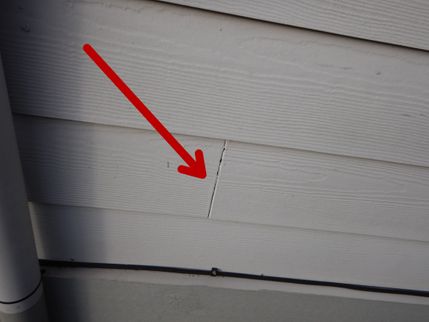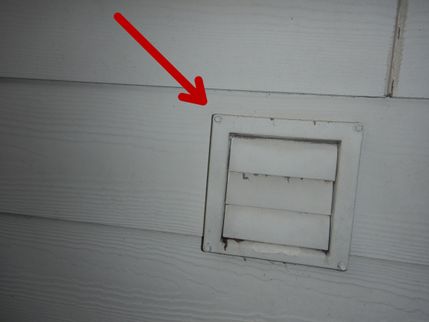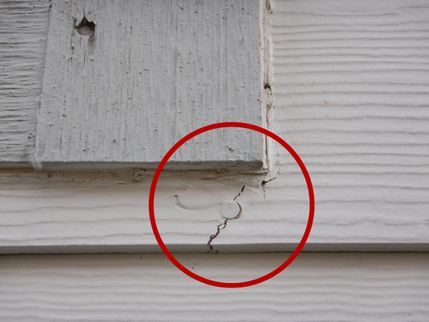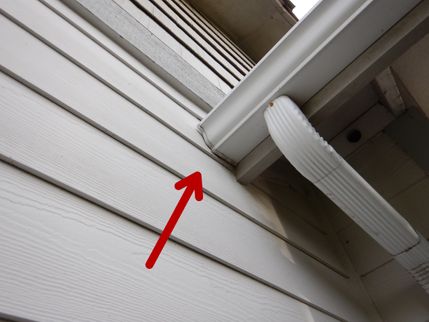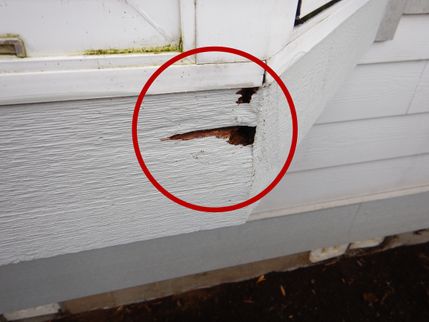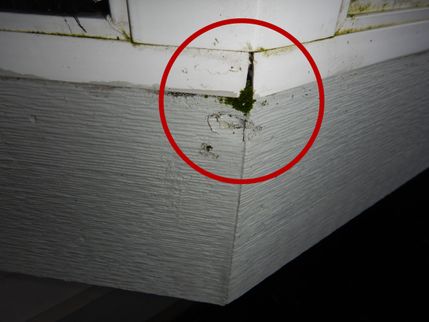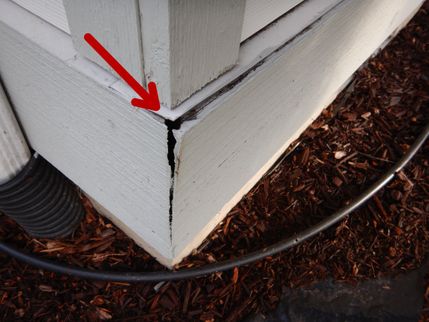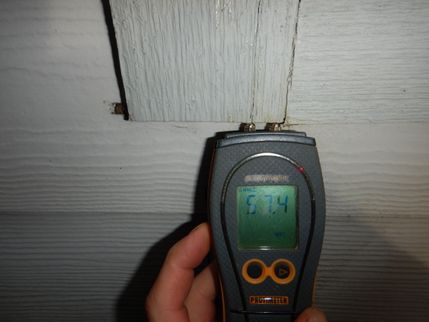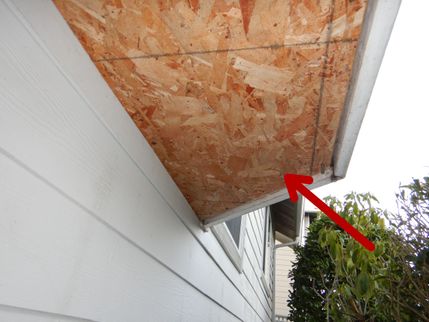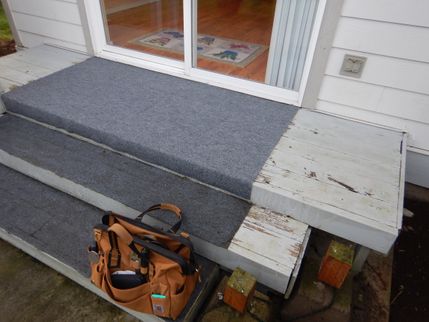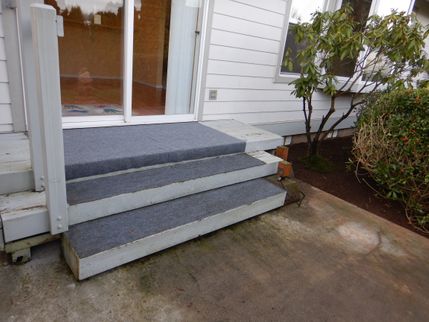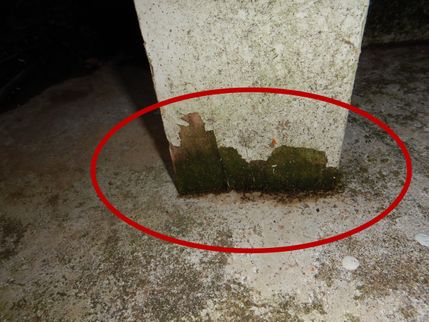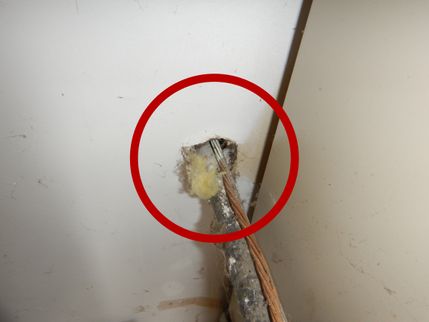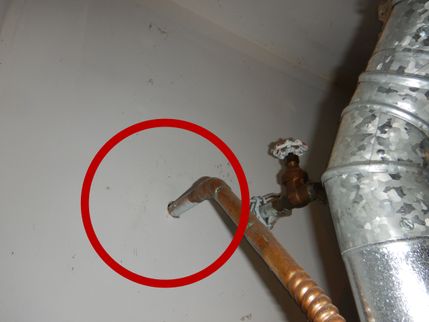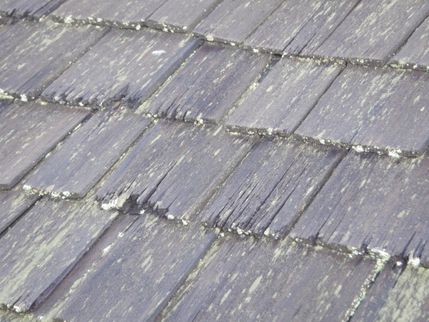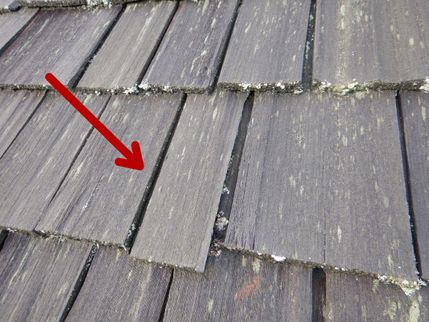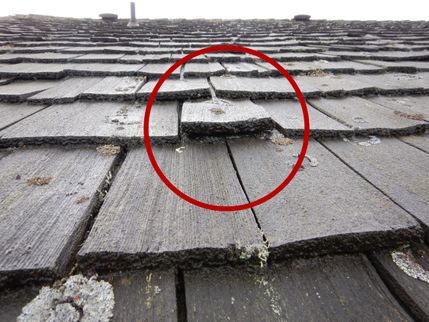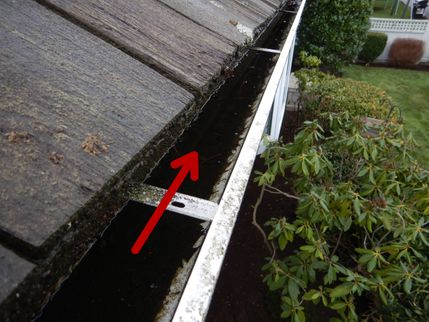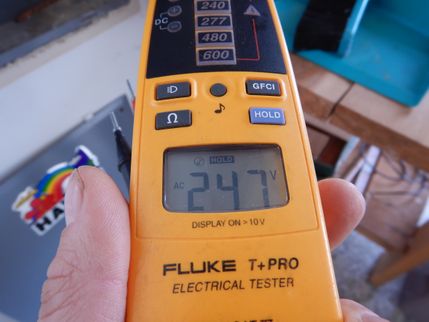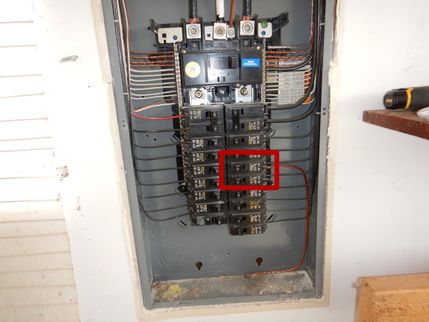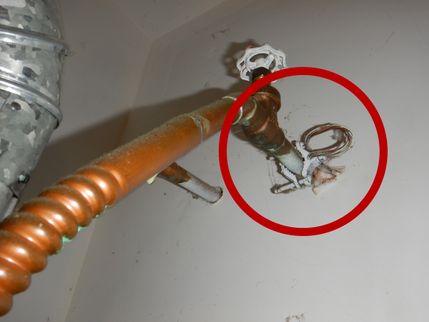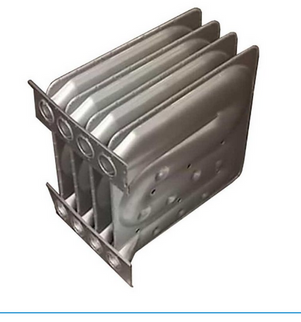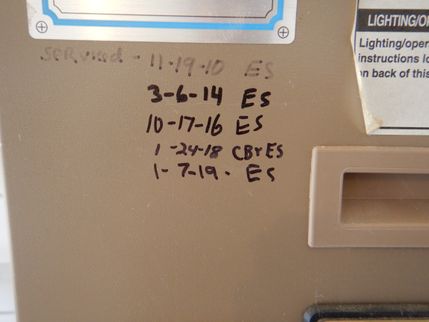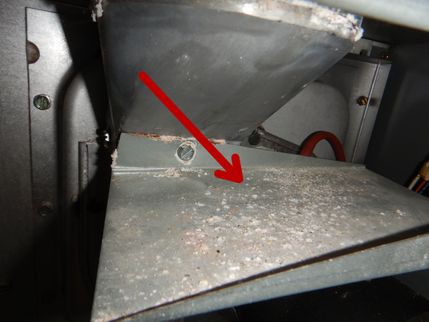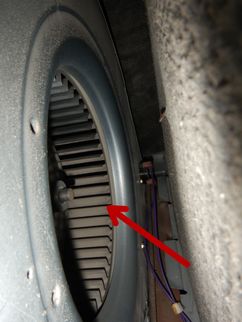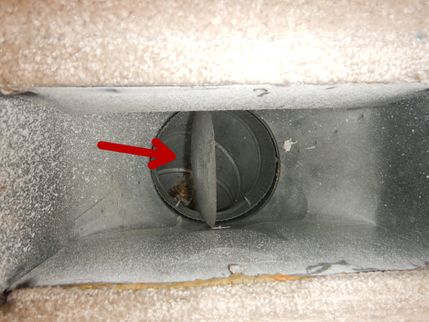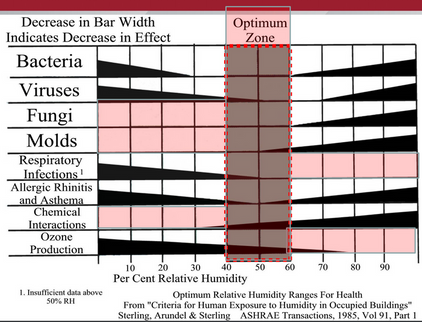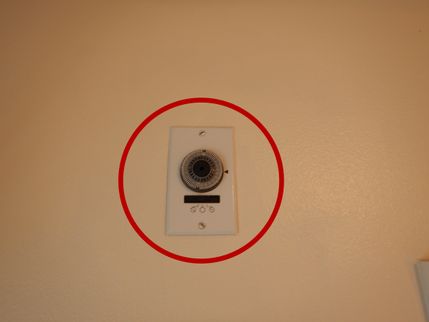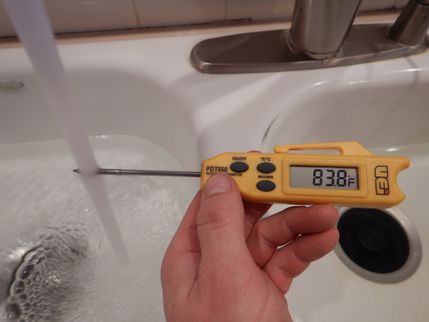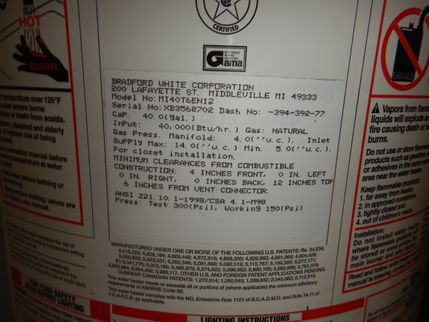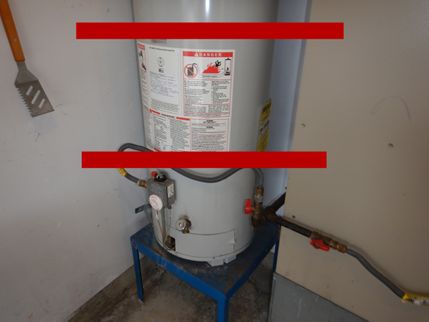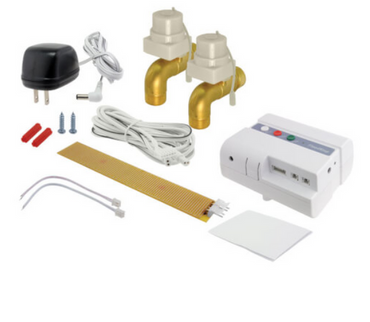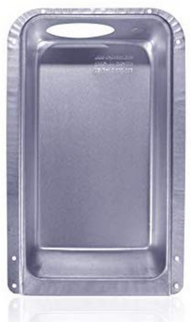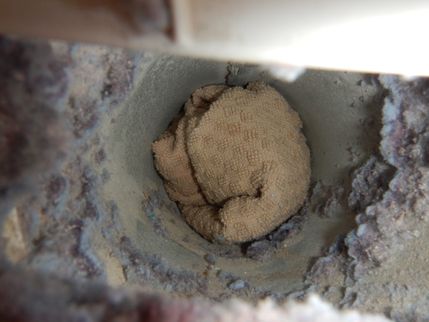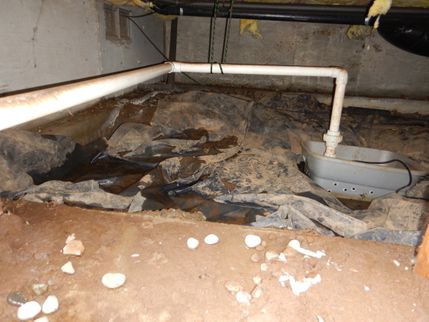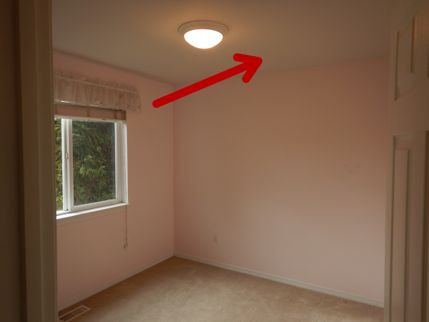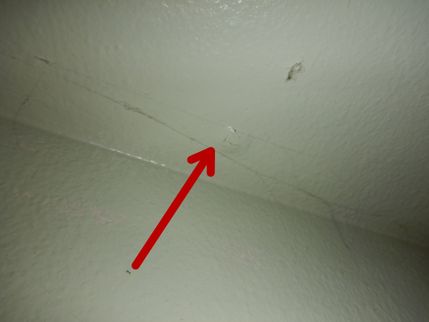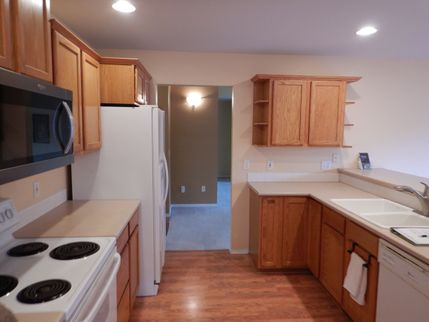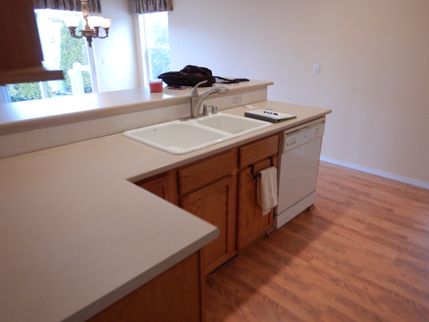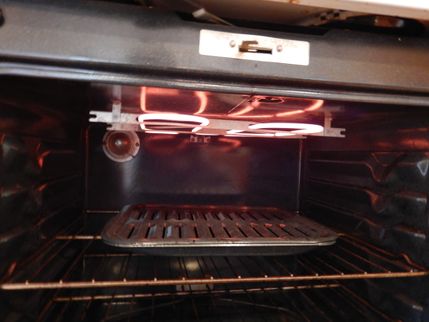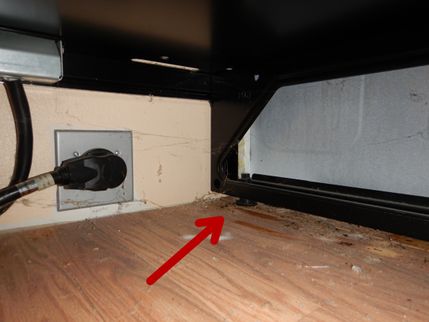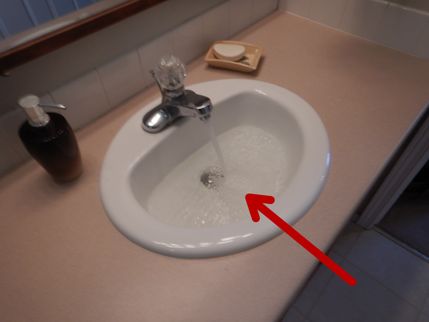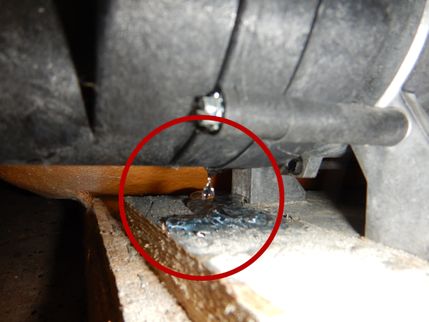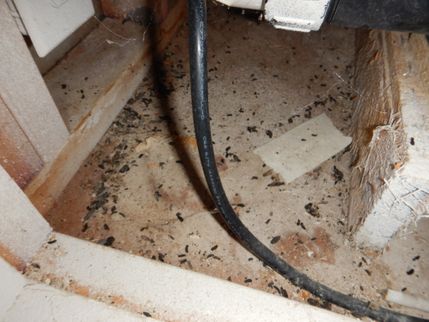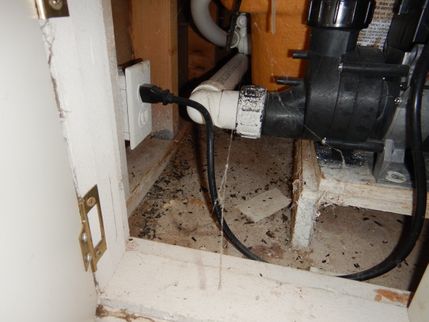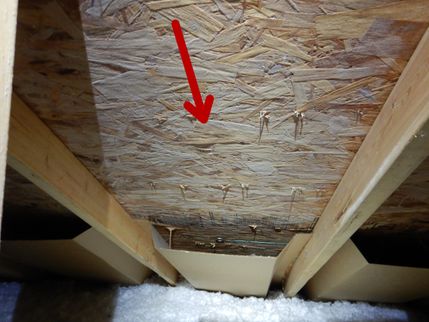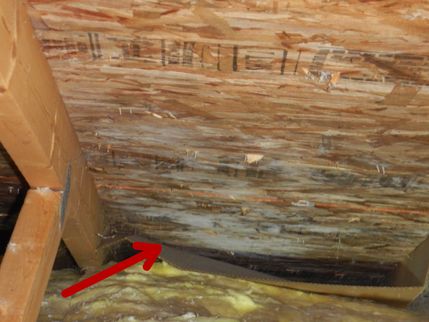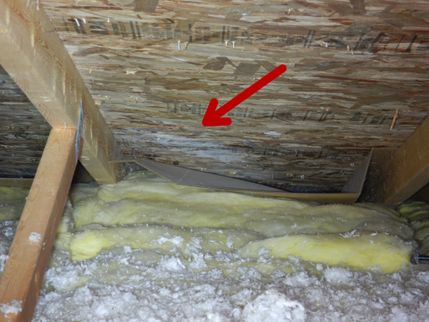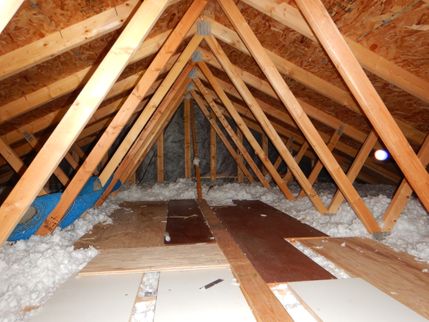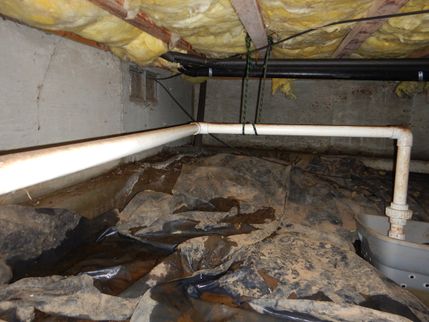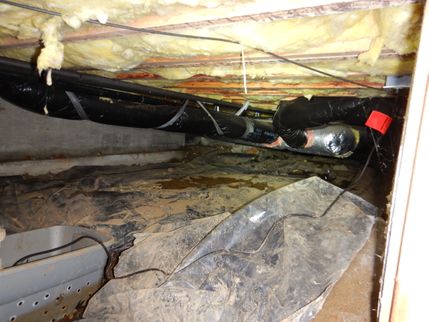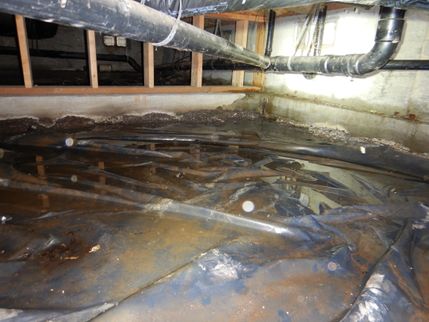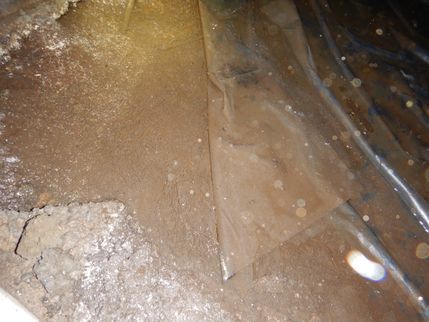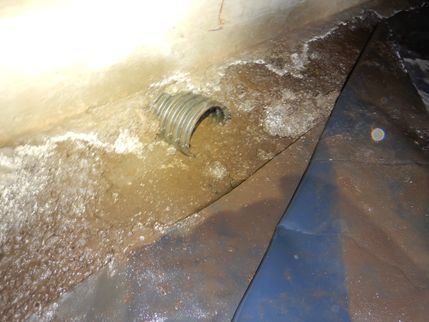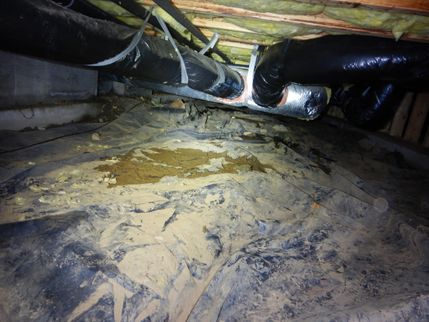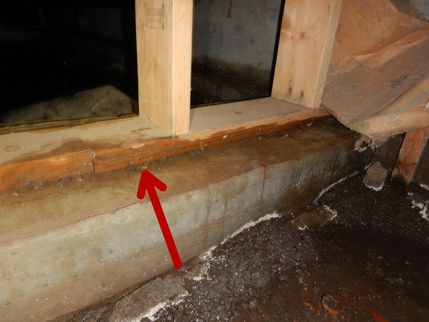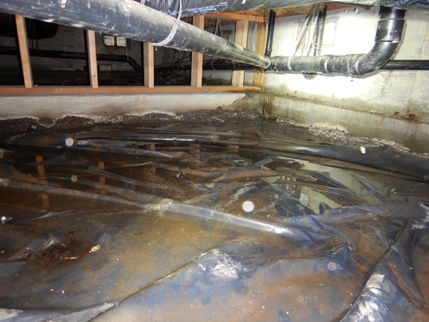The Scope and Purpose of a Home Inspection
Purchasing property involves risk
The purpose of a home inspection is to help reduce the risk associated with the purchase of a structure by providing a professional opinion about the overall condition of the structure. A home inspection is a limited visual inspection and it cannot eliminate this risk. Some homes present more risks than others. We cannot control this, but we try to help educate you about what we don’t know during the inspection process. This is more difficult to convey in a report and one of many reasons why we recommend that you attend the inspection.
A home inspection is not an insurance policy
This report does not substitute for or serve as a warranty or guarantee of any kind. Home warranties can be purchased separately from insuring firms that provide this service.
A home inspection is visual and not destructive
The descriptions and observations in this report are based on a visual inspection of the structure. We inspect the aspects of the structure that can be viewed without dismantling, damaging or disfiguring the structure and without moving furniture and interior furnishings. Areas that are concealed, hidden or inaccessible to view are not covered by this inspection. Some systems cannot be tested during this inspection as testing risks damaging the building. For example, overflow drains on bathtubs are generally not tested because if they were found to be leaking they could damage the finishes below. Our procedures involve non-invasive investigation and non-destructive testing which will limit the scope of the inspection.
This is not an inspection for code compliance
This inspection and report are not intended for city / local code compliance. During the construction process structures are inspected for code compliance by municipal inspectors. Framing is open at this time and conditions can be fully viewed. Framing is not open during inspections of finished homes, and this limits the inspection. All houses fall out of code compliance shortly after they are built, as the codes continually change. National codes are augmented at least every three years for all of the varying disciplines. Municipalities can choose to adopt and phase in sections of the codes on their own timetables. There are generally no requirements to bring older homes into compliance unless substantial renovation is being done.
This is just our opinion
Construction techniques and standards vary. There is no one way to build a house or install a system in a house. The observations in this report are the opinions of the home inspector. Other inspectors and contractors are likely to have some differing opinions. You are welcome to seek opinions from other professionals.
The scope of this inspection
This inspection will include the following systems: exterior, roof, structure, drainage, foundation, attic, interior, plumbing, electrical and heating. The evaluation will be based on limited observations that are primarily visual and non-invasive. This inspection and report are not intended to be technically exhaustive.
For more about the scope of a home inspection see: Washington State Home Inspection Standards at http://app.leg.wa.gov/RCW/default.aspx?cite=18.280.030.
Your expectations
The overall goal of a home inspection is to help ensure that your expectations are appropriate with the house you are proposing to buy. To this end we assist with discovery by showing and documenting observations during the home inspection. This should not be mistaken for a technically exhaustive inspection designed to uncover every defect with a building. Such inspections are available but they are generally cost-prohibitive to most homebuyers.
Your participation is requested
Your presence is requested during this inspection. A written report will not substitute for all the possible information that can be conveyed verbally by a shared visual observation of the conditions of the property.
How to Read This Report
Getting the Information to You
This report is designed to deliver important and technical information in a way that is easy for anyone to access and understand. If you are in a hurry, you can take a quick look at our "Summary Page” and quickly get critical information for important decision making. However, we strongly recommend that you take the time to read the full Report, which includes digital photographs, captions, diagrams, descriptions, videos and hot links to additional information.
The best way to get the layers of information that are presented in this report is to read your report online, which will allow you to expand your learning about your house. You will notice some words or series of words highlighted in blue and underlined – clicking on these will provide you with a link to additional information.
This report can also be printed on paper or to a PDF document.
Chapters and Sections
This report is divided into chapters that parcel the home into logical inspection components. Each chapter is broken into sections that relate to a specific system or component of the home. You can navigate between chapters with the click of a button on the left side margin.
Most sections will contain some descriptive information done in black font. Observation narrative, done in colored boxes, will be included if a system or component is found to be significantly deficient in some way or if we wish to provide helpful additional information about the system or the scope of our inspection. If a system or component of the home was deemed to be in satisfactory or serviceable condition, there may be no narrative observation comments in that section and it may simply say “tested,” or “inspected.”
Observation Labels
All narrative observations are colored, numbered and labeled to help you find, refer to, and understand the severity of the observation. Observation colors and labels used in this report are:
- Major Concern:Repair items that may cost significant money to correct now or in the near future, or items that require immediate attention to prevent additional damage or eliminate safety hazards.
- Repair:Repair and maintenance items noted during inspection. Please note that some repair items can be expensive to correct such as re-finishing hardwood floors, but are considered simply repair items due to their cosmetic nature.
- Recommended Maintenance:These are repair items that should be considered "routine home ownership items," such as servicing the furnace, cleaning the gutters or changing the air filters in the furnace.
- Improve:Observations that are not necessarily defects, but which could be improved for safety, efficiency, or reliability reasons.
- Monitor:Items that should be watched to see if correction may be needed in the future.
- Due Diligence:Observation such as a buried oil tank that may require further investigation to determine the severity and / or urgency of repair.
- Future Project:A repair that may be deferred for some time but should be on the radar for repair or replacement in the near future.
- Efficiency:Denotes observations that are needed to make the home more energy efficient as well as to bring the home up to modern insulation standards. This category typically includes windows and insulation. Other items, such as lighting and appliances, are not inspected for their energy status.
- Homeowner Association:These items should be brought to the attention of the Homeowners Association for corrections or information.
- Completed:Items that were initially an issue but have since been completed.
- Note:Refers to aside information and /or any comments elaborating on descriptions of systems in the home or limitations to the home inspection.
- Description:Detailed description of various aspects of the property noted during the inspection.
Summary Page
The Summary Page is designed as a bulleted overview of all the observations noted during inspection. This helpful overview is not a substitution for reading the entire inspection report. The entire report must be read to get a complete understanding of this inspection report as the Summary Page does not include photographs or photo captions.
Moisture Meter Testing
Where moisture meter testing is indicated in this report a Protimeter Surveymaster Dual Function was used.
Summary
Major Concerns
- RCG2-1 Roof, Chimney and Gutters:
Inspection of this wood shake roof revealed the need for replacement. These roofs can often be maintained by doing a roof tune up, where loose, split and damaged shingles are replaced. This roof showed well over 10% of its shakes in a failing and damaged condition. The cost to repair this roof could exceed the remaining value of the roof. Hire a licensed roofing contractor to further evaluate and replace this roof.
- CS3-6 Crawl Space:
Bulk water was noted in the crawl space. This is a major concern as standing water can lead to settlement, molds and wood destroying organisms. Hire a drainage specialist to further evaluate and correct drainage as needed. Repairs can be complicated and may take some time to diagnose and correct. Repairs should start with correcting exterior drainage and continue inside if needed with tools like interior drain pipe, sump pumps or gravel to act as a capillary break. Please note that this condition also limits this inspection as I do not crawl through standing water.
- Standing water and previous moisture staining.
- Standing water noted on top of vapor barrier.
- Surface corrosion noted on metal components indicting humid/wet conditions.
- Moisture saturated wood framing due to high levels of water in the area.
- Heavy amounts of moisture accumulation.
Repairs
- G-1 Grounds:
All trees, branches and vegetation should be pruned at least six feet away from the building to eliminate a condition conducive to wood destroying organisms and a path for rodent entry.
- ED1-1 Exteriors and Decks:
Visual inspection of the fiber cement siding installation showed the need for repairs as well as some installation details that are not consistent with modern manufacturers installation requirements. This is typical for this age of construction. Some of the items noted can be repaired or improved, while others simply are the way they are until a larger re-siding is needed. Consult with a qualified contractor to further investigate the siding and repair as recommended to prolong the useful life of the siding. Examples of observations noted during inspection include:
- Areas of split butt joint caulking.
- Fan and vent terminations are missing proper mounting blocks.
- Damaged siding materials.
- Gutters should have a 1 inch clearance from the siding
- ED1-2 Exteriors and Decks:
Localized repairs are needed to the exterior trim. This is important for the siding system to perform as intended. Hire a qualified contractor to further evaluate and repair the exterior trim here.
- ED1-4 Exteriors and Decks:
The decking on this deck has been painted and is exposed to the weather. This will allow water to penetrate the wood and can hasten the deterioration process. Localized soft spots were found, but there appears to be some useful remaining service life. I recommend replacing this decking in the near term for safety and reliability. Please note that the structure of the deck is treated lumber and should be re-usable.
- ED1-5 Exteriors and Decks:
The deck and its components had several conditions noted. These areas will need a further evaluation and needed repairs by a qualified party. These items include:
- Connections were missing joist hangers as needed.
- Missing house wrap below ledger board installation.
- Wood support posts were in direct contact with the patio materials. Wood decay was noted.
- Improper connections at the post and beams.
- G2-1 Garage:
Multiple unprotected openings were found in the garage wall fire separation - see holes in sheetrock at the garage door brackets. This should be repaired to complete the fire separation. Standards recommend complete sheetrock walls and ceilings between the garage and all habitable space. Use type C or type X sheetrock as needed to complete large openings in the fire separation and seal up all small gaps in the walls with fire stop caulking or drywall mud as needed.
- RCG2-2 Roof, Chimney and Gutters:
The gutters are clogged with organic debris and require cleaning to ensure proper control of roof runoff. Clean the gutters and ensure they are unobstructed, leak free and properly sloped to drain. This is routine house maintenance; I would expect the need to clean gutters and downspouts regularly.
- HCFV-1 Heating, Cooling, Fireplaces and Ventilation:
Annual servicing of the gas forced air furnace is recommended for safe and reliable heat. I could not find recent service records on the furnace. The furnace was tested during inspection and was operational. The design life of these forced air furnaces is 15-20 years. I recommend having it serviced and keeping it on an annual service schedule until updated. Examples of observations noted during inspection include:
- The interior cabinet was dirty and in need of cleaning.
- The safety switch improperly taped down and will not function correctly.
- Dirty blower motor indicating the need for cleaning and servicing.
- HCFV-2 Heating, Cooling, Fireplaces and Ventilation:
The heating ductwork is dirty and needs to be cleaned to improve indoor air quality and efficiency of the heating system.
- WH-1 Water Heater:
Install listed seismic straps to restrain the water heater in the event of an earthquake; none were noted during inspection. Two straps should be located on the water heater: one on upper 1/3rd of tank and one at the lower 1/3rd.
- WH-2 Water Heater:
An expansion tank is recommended for the water heater; these are required if the house has a closed plumbing system. Expansion tanks help reduce pressure on the plumbing system by creating a buffer or a place for water to expand into as water swells during thermal expansion. Installation of expansion or pressure tanks is modern installation practice and will be required if a pressure reducing valve has been installed on a public water supply. Consult with a qualified plumber to install.
- LAP-2 Laundry and Additional Plumbing:
The dryer exhaust ductwork is dirty and needs to be cleaned for improved safety. This is important regular maintenance to eliminate a potential fire hazard.
- LAP-3 Laundry and Additional Plumbing:
A sump pump is installed in the crawl space and it appears to be in use. The pump was operational when tested but the installation appears amateur. Examples of observations noted during inspection include:
- There is no check valve even though the sump drains to the sewer line
- There is no cover for the well just a rough opening in the slab floor and there is no moisture alarm.
I recommend inquiring with the seller for any additional information about this pump: is it required to keep the basement dry? Accurate information will help better determine the scope and urgency for a repair here. Have this sump pump further evaluated and repaired by a specialist for reliable and safe operation.
- I-2 Interior:
Nail pops were noted in the ceiling. This can sometimes be from one-time framing shrinkage or settlement or it can be more persistent form seasonal truss uplift or other seasonal movements in the house frame. This latter cause can be more difficult to correct. If it is truss uplift, the truss cord needs to be better secured to the interior partition walls in the attic. I recommend repairing these nail pops and then monitoring for signs of on-going movement.
- K-3 Kitchen:
An anti-tip device is needed to prevent this range from tipping during operation of the oven door. This is a small clip that secured the back adjustable feet of the range to the floor.
- K-4 Kitchen:
The appliances and finishes in the kitchen are generally old. They were in working order at the time of the inspection, but failure and breakdown should be expected at any time due to the age and visible condition of the appliances. For reliable performance, budget to update this kitchen soon.
- HB-1 Hallway Bathroom:
A slow drain was noted at the family bathroom sink indicating that the drain may be obstructed. Repair as needed so the drain keeps up with the fixture supply. This typically involves cleaning out the trap.
- HB-2 Hallway Bathroom:
The jetted tub was filled and tested during inspection today. The jets performed as intended. However active leakage was noted at the motor for the tub itself. I recommend a licensed plumbing contractor evaluate and repair this condition.
- HB-3 Hallway Bathroom:
Inspection below the jetted tub today indicated rodents have been below the tub at one time. Only a few droppings were noted and these appeared to be old. Inquire with the seller regarding the history of rodent problems and set and monitor traps to verify this is and older condition. Also, seal around plumbing penetrations at the sub-floor. This is good for the house in general and will help keep rodents out of this space.
- A-2 Attic:
A few portions of the attic decking were noted to be covered in dark stains / microbial-like substances. This indicates the attic has experienced seasonal condensation problems. This is generally caused by heat migration into the attic during cold weather resulting in condensation when the roof sheathing reaches dew point. I recommend hiring a mold remediation specialist to further evaluate this condition and implement repairs as recommended. The way to control this problem involves a four-pronged approach:
1. Control relative humidity inside the house
2. Be sure all fans running through the attic are properly terminating to the exterior.
3. Ensure adequate air barriers between the house and the attic (stop air leaks in the ceiling by sealing around can lights, fans and other penetrations and in the crawl space below the house at the sub-floor) and
4. Be sure the roof cavity is ventilated correctly. (Please note that correctly does not necessarily mean more ventilation. Too much ventilation can exacerbate this problem, especially if air sealing has not been done. )
- As a general rule, standards recommend keeping indoor relative humidity below 50% in cold weather to prevent condensing surfaces.
- A-3 Attic:
The attic insulation is damaged and incomplete in places. For improved energy efficiency and to reduce heat loss, I recommend repairing incomplete thermal barriers and re-insulate to modern standard or to best possible levels. Be sure to seal up all air leakage points during repairs and prior to insulating to modern standard be sure all projects such as wiring and bath fans have been completed.
- A-4 Attic:
The cardboard baffles in the attic are designed to keep insulation away from soffit vents to insure these vents communicate. These are falling down in places. This could block proper air flow. Secure loose baffles to ensure they perform as intended.
- CS3-3 Crawl Space:
The crawl space access hatch does not look rodent proof. Rebuilding is recommended to eliminate a rodent entry point. A nice way to seal the opening is to build a frame of pressure treated wood that fits snugly into the opening in the foundation and then cover this with 1/4 wire mesh.
- CS3-4 Crawl Space:
The plastic vapor barrier in the crawl space is incomplete. Use 6 mil black plastic to cover all exposed earth. This helps to reduce humidity and eliminate conducive pest conditions in the crawl space. Adjust the current vapor barrier or add more plastic as needed.
Recommended Maintenance Items
- I-1 Interior:
The wall to wall caret has localized stains. Clean or replace carpets as desired.
Improves
- ED1-3 Exteriors and Decks:
An area of the bay window was not adequately sealed or painted as needed. This may allow accelerated decayed due to moisture intrusion over time. I recommend these areas be painted/sealed as needed throughout the dwelling.
- ES1-2 Electric Service:
Multi-wire circuits were noted in the electric panel. These are circuits where two ungrounded conductors share a neutral. Starting in 2008, these were required to have a means of disconnecting BOTH ungrounded conductors together. This means a handle tie should be used. This is recommended for improved safety.
- LAP-1 Laundry and Additional Plumbing:
A moisture alarm with water shut-off features is recommended under the washing machine to protect against accidental leaks in the supply hoses. Pans can be effective when there is a drain, but even these will not protect against a burst supply connector. A moisture alarm with automatic shut-off will. Watts is a brand I have seen installed: http://www.watts.com/pages/learnAbout/intelliflow.asp?catId
Monitors
- WH-3 Water Heater:
This water heater is likely close to the end of its useful service life. The average life of these water heaters is statistically 8-12 years though in practice, they can vary widely between 8-20 years depending on water quality and maintenance schedule such as frequency of flushing the tank and replacing sacrificial anodes. Budget to replace this water heater at any time. Water was hot at the time of inspection.
Due Diligences
- P-1 Plumbing:
A video camera sewer scope is recommended. An evaluation of the sewer line below the ground is beyond the scope of this inspection. Due to the age and location of the building, a sewer scope is recommended to further evaluate the sewer line and the below ground connections between the house and the municipal sewer line. Sewer scopes are done using video cameras and can reveal the materials, condition and reliability of the sewer line. If that has been done recently, I recommend having a sewer scope performed.
Efficiencies
- I-3 Interior:
Air sealing is needed at ceiling penetrations for improved energy efficiency and to prevent air leakage into the attic that could lead to seasonal condensation. Seal up around all penetrations as needed.
Notes
- GC-1 General Comments:
This house was vacant / unoccupied at the time of inspection. Vacant and unoccupied houses present unique challenges for home inspection, especially the piping and wiring systems which have not be subject to regular use prior to the inspection. While these systems can be tested during inspection, this one-time test is quite different than regular use and it is difficult to know how these systems will respond to regular use after the inspection. For example, septic systems may initially function and then fail under regular daily use. Plumbing traps may operate with no signs of leaks and then let go when being actively used for a few days. Shower pans may only leak when someone is standing in the shower and taking a shower. Seals for plumbing fixtures can dry up and leak when not is use. Sewer lines with roots may allow water flow, but then fail when waste and tissue are flushed; it can take a few days for that to backup. Please understand we are trying our best to look for clues of past or existing problems to paint a realistic best-guess as to the reliability of these systems during inspection.
- G2-2 Garage:
Typical cracks were noted in the concrete garage slab. No control joints were used in the pour here so the concrete will crack. You can fill the cracks with a masonry rated caulking, but no repair is needed at this time; this is a cosmetic defect.
- ES1-3 Electric Service:
Water and gas pipe pipe bonding noted.
- EDFW1-1 Electric Distribution and Finish Wiring:
Carbon monoxide alarms were found and noted during inspection. Be sure to check these regularly. The standard is 1/ floor and 1 outside all sleeping areas.
- HCFV-3 Heating, Cooling, Fireplaces and Ventilation:
This house has a timer for a whole house fan - see laundry room. This timer is designed to make a fan come on periodically to exhaust interior air, facilitate air changes and help keep the indoor relative humidity in check - for more information see: this LINK. As a general rule, keep relative humidity around 50% in cold weather to reduce chances for condensation.
- P-2 Plumbing:
The water temperature was tested at 83 degrees F today. This is considered very low and should be adjusted to a range of 100-120 degrees as desired.
- I-4 Interior:
Several of the windows were operated for functionality and found to be acceptable.
- HB-4 Hallway Bathroom:
I tested the bath fans today and they appeared to be working as intended.
- HB-5 Hallway Bathroom:
During inspection today I operated all plumbing fixtures in bathrooms. I ran a moisture meter around toilets and tile shower enclosures to check for concealed leaks and sounded for loose tile and finishes in shower and tub enclosures. I do not test bathtub overflow drains as this risks damaging finishes around the tub. Monitor tubs while filling and avoid pushing water into the overflow. Even well-installed overflow drains can leak as the gaskets that seal the overflow will dry out over time and may no longer provide a watertight seal. Monitor plumbing after moving into a new home as testing during inspection presents less stress on plumbing than daily use. Please note that vacant homes present additional risk as it can be difficult to distinguish how the plumbing system will respond to daily use. Any defects uncovered during inspection are listed in this report.
- A-1 Attic:
I did not crawl the crawl space for the attic where there was no ramp or safe way to access the space. Crawling in the V of trusses or on top of framing risks damaging thermal barriers and ceiling finishes and is not a safe way to access an attic. This limited inspection of this space.
- CS3-2 Crawl Space:
During inspection today I was able to crawl the entire crawl space. The sub-floor has been insulated so I pulled insulation back in places to inspect the sub-floor, rim joist and floor frame. Please note that most of the framing was concealed from view by insulation.
- CS3-5 Crawl Space:
The sub-floor in this crawl space was generally well insulated. This obstructs visual inspection as most of the framing was not able to be inspected. I did pull back insulation in places to spot check the floor frame. No defects were found.
- SB-1 Structure and Basement:
Signs of seismic protection noted during inspection. This inspection is not a cohesive analysis of seismic engineering, but I do look for signs of seismic protection.
General Comments
Building Characteristics, Conditions and Limitations
Type of Building : Residential Single Family (1 story)
Approximate Square Footage: 1600
Approximate Year of Original Construction: 2004
Attending the Inspection: Buyer and Buyer's Agent
Occupancy: Unoccupied
Animals Present: No
Weather during the inspection: Partly cloudy
Approximate temperature during the inspection: Below 65[F]
This house was vacant / unoccupied at the time of inspection. Vacant and unoccupied houses present unique challenges for home inspection, especially the piping and wiring systems which have not be subject to regular use prior to the inspection. While these systems can be tested during inspection, this one-time test is quite different than regular use and it is difficult to know how these systems will respond to regular use after the inspection. For example, septic systems may initially function and then fail under regular daily use. Plumbing traps may operate with no signs of leaks and then let go when being actively used for a few days. Shower pans may only leak when someone is standing in the shower and taking a shower. Seals for plumbing fixtures can dry up and leak when not is use. Sewer lines with roots may allow water flow, but then fail when waste and tissue are flushed; it can take a few days for that to backup. Please understand we are trying our best to look for clues of past or existing problems to paint a realistic best-guess as to the reliability of these systems during inspection.
Grounds
Grounds, Trees and Vegetation
All trees, branches and vegetation should be pruned at least six feet away from the building to eliminate a condition conducive to wood destroying organisms and a path for rodent entry.
Exteriors and Decks
Siding and Trim
Trim Material: Wood
Siding Material: Fiber-cement
Manufacturers of fiber cement siding have done a poor job helping inspectors and consumers distinguish their products after installation; these products have few if any distinguishing characteristics. This report will site James Hardie manufacturers installation requirements for reference because they are the most common manufacturer of fiber cement siding and the various manufactures seem to share similar installation guidelines. However, reference of these guidelines in this report does not ensure that the fiber cement siding here is a James Hardie product.
Visual inspection of the fiber cement siding installation showed the need for repairs as well as some installation details that are not consistent with modern manufacturers installation requirements. This is typical for this age of construction. Some of the items noted can be repaired or improved, while others simply are the way they are until a larger re-siding is needed. Consult with a qualified contractor to further investigate the siding and repair as recommended to prolong the useful life of the siding. Examples of observations noted during inspection include:
- Areas of split butt joint caulking.
- Fan and vent terminations are missing proper mounting blocks.
- Damaged siding materials.
- Gutters should have a 1 inch clearance from the siding
Localized repairs are needed to the exterior trim. This is important for the siding system to perform as intended. Hire a qualified contractor to further evaluate and repair the exterior trim here.
Exterior Window Frames
An area of the bay window was not adequately sealed or painted as needed. This may allow accelerated decayed due to moisture intrusion over time. I recommend these areas be painted/sealed as needed throughout the dwelling.
Decks, Porches and Balconies
Structure: Observations Noted
Ledger Board: Standard
Decking Material: Softwood (Painted - Not Recommended)
The decking on this deck has been painted and is exposed to the weather. This will allow water to penetrate the wood and can hasten the deterioration process. Localized soft spots were found, but there appears to be some useful remaining service life. I recommend replacing this decking in the near term for safety and reliability. Please note that the structure of the deck is treated lumber and should be re-usable.
The deck and its components had several conditions noted. These areas will need a further evaluation and needed repairs by a qualified party. These items include:
- Connections were missing joist hangers as needed.
- Missing house wrap below ledger board installation.
- Wood support posts were in direct contact with the patio materials. Wood decay was noted.
- Improper connections at the post and beams.
Garage
Garage General
Garage Type: Attached
Multiple unprotected openings were found in the garage wall fire separation - see holes in sheetrock at the garage door brackets. This should be repaired to complete the fire separation. Standards recommend complete sheetrock walls and ceilings between the garage and all habitable space. Use type C or type X sheetrock as needed to complete large openings in the fire separation and seal up all small gaps in the walls with fire stop caulking or drywall mud as needed.
Garage Doors and Automatic Openers
Overhead Garage Door Type: Metal
Automatic Garage Opener: Present
Garage Occupant Door: Solid Wood
Garage Floor
Garage Slab: Typical Cracks Noted
Typical cracks were noted in the concrete garage slab. No control joints were used in the pour here so the concrete will crack. You can fill the cracks with a masonry rated caulking, but no repair is needed at this time; this is a cosmetic defect.
Roof, Chimney and Gutters
Roof Materials
Method of Roof Inspection: View from ground with Camera on inspection pole
Roof Style: Hip
Flashings: Present and Visually Standard
Roof Covering Materials: Wood shake
Approximate Age of Roof Covering: 16-18 Years
Overlay Roof: No
Inspection of this wood shake roof revealed the need for replacement. These roofs can often be maintained by doing a roof tune up, where loose, split and damaged shingles are replaced. This roof showed well over 10% of its shakes in a failing and damaged condition. The cost to repair this roof could exceed the remaining value of the roof. Hire a licensed roofing contractor to further evaluate and replace this roof.
Roof Penetrations and Flashing
Observations: Plumbing - Damaged
Plumbing - Damaged Plumbing - LEAD Bad
Plumbing - LEAD Bad Damper - Cracked 1
Damper - Cracked 1 Damper - Cracked SEV
Damper - Cracked SEV Fasteners - Sealant
Fasteners - Sealant
Roof Edge Flashing: Missing - Drip
Missing - Drip Missing - Rake
Missing - Rake Missing - Both
Missing - Both Improper Overlap
Improper Overlap
Gutters and Downspouts
Gutter and Downspout Materials: Aluminum
The gutters are clogged with organic debris and require cleaning to ensure proper control of roof runoff. Clean the gutters and ensure they are unobstructed, leak free and properly sloped to drain. This is routine house maintenance; I would expect the need to clean gutters and downspouts regularly.
Electric Service
Electric Service Voltage Tested
Service Voltage: 120/240
Electric Service
Service Entrance: Below Ground
Meter Base Amperage: 200
Electric Service Equipment
Service Entrance (SE) conductor Size: Copper, 2/0, 200 amps
Main Panel Amperage: 200 amps
Electric Service Amperage: 200 amps
Main Electric Panel Location: Garage
Panel Manufacturer: Square D
Multi-wire circuits were noted in the electric panel. These are circuits where two ungrounded conductors share a neutral. Starting in 2008, these were required to have a means of disconnecting BOTH ungrounded conductors together. This means a handle tie should be used. This is recommended for improved safety.
Electrical Grounding System
Present - Could Not Confirm
During a visual inspection, every effort is made to inspect the visible components of the electrical system grounding. The grounding system is critical for safely discharging electrical surges, especially in the case of lightning strikes. There is no way in the context of a home inspection to verify the "effectiveness" of the grounding system as much of the system is not visible and there are not practical tests one can perform in the way we can test a furnace or a plumbing fixture. However, there are many things that can lead me to recommend further evaluation of the grounding system by a licensed electrical contractor and they will be documented in the observations below if discovered.
Electric Distribution and Finish Wiring
Branch Wiring
Wire Material: Copper
Wiring Method: Non-metallic sheathed cable
Receptacles and Fixtures
Inspection Method: Random Testing
Electric Receptacles: Three wire receptacles
Smoke and Carbon Monoxide Alarm Systems
CO Alarms: Present
The installation of carbon monoxide alarms is recommended for all homes that have fuel burning appliances such as gas or oil furnaces, gas water heaters, gas ovens and cook-tops, gas fireplaces and wood stoves. In addition, Washington State law (WAC 51-51-0315) now requires UL 2034 approved carbon monoxide alarms in ALL homes and condominiums being sold in Washington State. The location should be: at least one alarm outside of all sleeping areas and one on each floor of the house. Best practices are to have these alarms hardwired with a battery back-up - though requirements are for the installation to meet manufacturer's specifications. Carbon monoxide is a colorless, odorless gas that can cause sickness, nausea and even death. Alarms have a useful service life of roughly 6 years, so changing them more frequently than smoke alarms is recommended.
Smoke Alarms: Present
During the home inspection, I try and test a representative sample of the smoke alarms by using the test button on the alarms. This is NOT an accurate test of the sensor just a test to see if the unit is powered. For reliability, fire marshals recommended updating smoke alarms every 10 years and changing batters bi-annually. The latest data indicate that we should be using photo-electric technology in our smoke alarms for improved fire detection and to reduce problems with false alarms which can lead to disabling of this important safety system. Unfortunately, the alarms have to be removed to determine if they are photo-electric or ionization types. It is surprisingly complex to accurately test a smoke alarm system and determine the reliability, age, and type of sensor technology used, especially as many homes can have half a dozen or more alarms throughout the house. A complete evaluation of smoke alarms is beyond the scope of this inspection. For optimal fire safety, I recommend taking control of these important safety devices and learning about how to service and maintain your smoke alarm system to keep the building occupants safe. For more information, please read this link.For more information, please read this link.
Carbon monoxide alarms were found and noted during inspection. Be sure to check these regularly. The standard is 1/ floor and 1 outside all sleeping areas.
Heating, Cooling, Fireplaces and Ventilation
Heating System
Energy Source: Natural gas
Heating Method: Gas forced air furnace
This house has a gas forced air furnace. A critical component to all combustion equipment like this is the heat exchanger. This is the welded clam-shell piece of metal inside the furnace that contains the products of combustion so that moisture, carbon monoxide and other products of combustion do not mix with interior air and get safely vented to the exterior. Heat exchangers on modern furnaces have an average life expectancy of 15-20 years. Unfortunately, heat exchangers are buried inside of heating equipment; they are not visible and specifically excluded from a home inspection. The risk of continuing to user older combustion, forced-air equipment is you could get a crack and the heat exchanger and never be aware of it. Cracked heat exchangers can pose a safety hazard and while heat exchangers can be replaced, typically, the repair involves furnace replacement.
Manufacturer: Armstrong
Capacity: 50,000 btu's
Age: 2004
Last Service Record: Recent Service Records Noted
This photo shows the most recent service records found on the heating equipment during inspection.
Annual servicing of the gas forced air furnace is recommended for safe and reliable heat. I could not find recent service records on the furnace. The furnace was tested during inspection and was operational. The design life of these forced air furnaces is 15-20 years. I recommend having it serviced and keeping it on an annual service schedule until updated. Examples of observations noted during inspection include:
- The interior cabinet was dirty and in need of cleaning.
- The safety switch improperly taped down and will not function correctly.
- Dirty blower motor indicating the need for cleaning and servicing.
Air Filters
Filtration Systems: Disposable
Your heating system has disposable air filters installed. These should be changed quarterly or more to ensure proper air flow at the furnace. Be sure to install the filters with the arrows pointing in the same direction as the air flow in the furnace.
Heating and Cooling Distribution Systems
Heat Source in Each Room: Present
Distribution Method: Forced Air / Ducts
The heating ductwork is dirty and needs to be cleaned to improve indoor air quality and efficiency of the heating system.
Mechanical Ventilation Systems
Whole House Fans, Ventilation and HRVs: Landry / House Fan Timer (Noted)
This house has a timer for a whole house fan - see laundry room. This timer is designed to make a fan come on periodically to exhaust interior air, facilitate air changes and help keep the indoor relative humidity in check - for more information see: this LINK. As a general rule, keep relative humidity around 50% in cold weather to reduce chances for condensation.
Plumbing
Water Meter
Location of Water Meter Note
Water Service Supply
Pipe Material: Plastic
Water Supply: Public water
Water Pressure: Water Pressure Tested
This shows the water pressure tested during inspection. Generally, "normal water pressure," should be between 30-80 PSI, though pressures near or below 30 can result in poor functional flow to fixtures. Water pressures in excess of 80 PSI risk damaging supply piping components and should be controlled with a pressure reducing valve.
Pressure Reducing Valve: Present
This house has a pressure reducing valve to control high water pressure in the street.
Distribution Pipe
Pipe Insulation: Present
Functional Flow: Average
Waste Pipe and Discharge
Discharge Type: Public sewer
Please note that when the sewage discharge type is listed here, it is listed based on public records and disclosure. It is always possible that the system is not as it is listed; for example, a property could be listed as a public sewer system when in fact it is on a private septic system. This is unlikely, but is another reason why we recommend further evaluation of all sewage discharge systems.
Waste and Vent Pipe Materials: ABS plastic
A video camera sewer scope is recommended. An evaluation of the sewer line below the ground is beyond the scope of this inspection. Due to the age and location of the building, a sewer scope is recommended to further evaluate the sewer line and the below ground connections between the house and the municipal sewer line. Sewer scopes are done using video cameras and can reveal the materials, condition and reliability of the sewer line. If that has been done recently, I recommend having a sewer scope performed.
Water Temperature
Water Temperature Measured During Inspection: Low Temperature
Exterior Hose Bibs
Operating
Water Heater
Water Heater
Manufacturer: Bradford-White
System Type: Tank
Size: 40 gal
Age: Bradford White (X = 2001)
Energy Source: Gas
Straps : None Found
Pad: None Needed
Drain Pan: Not Needed
Expansion Tank: None Noted - Recommended
Temperature Pressure Relief Value: Present - Not Tested
The temperature and pressure relief valve is arguably one of the most important safety devices in your house. Should the thermostats fail inside your water heater, this allows excess pressure to "blow off," which will prevent catastrophic build up of temperature and pressure which can make water heaters explosive. I do not test the "blow off valve" during inspection as there is a risk it could stick open and testing could cause the need for a repair. It is recommended that these be inspected annually; I would at least ask for a plumber to test the device every time I had a plumber out for any other job.
Install listed seismic straps to restrain the water heater in the event of an earthquake; none were noted during inspection. Two straps should be located on the water heater: one on upper 1/3rd of tank and one at the lower 1/3rd.
An expansion tank is recommended for the water heater; these are required if the house has a closed plumbing system. Expansion tanks help reduce pressure on the plumbing system by creating a buffer or a place for water to expand into as water swells during thermal expansion. Installation of expansion or pressure tanks is modern installation practice and will be required if a pressure reducing valve has been installed on a public water supply. Consult with a qualified plumber to install.
This water heater is likely close to the end of its useful service life. The average life of these water heaters is statistically 8-12 years though in practice, they can vary widely between 8-20 years depending on water quality and maintenance schedule such as frequency of flushing the tank and replacing sacrificial anodes. Budget to replace this water heater at any time. Water was hot at the time of inspection.
Laundry and Additional Plumbing
Washer
Observations : Tested
A moisture alarm with water shut-off features is recommended under the washing machine to protect against accidental leaks in the supply hoses. Pans can be effective when there is a drain, but even these will not protect against a burst supply connector. A moisture alarm with automatic shut-off will. Watts is a brand I have seen installed: http://www.watts.com/pages/learnAbout/intelliflow.asp?catId
Dryer
Observations: Tested
Proper dryer exhaust venting is critical for safe and reliable performance from the dryer. Here are some basic rules of thumb for dryer exhaust duct installation: Unless a vent-free appliance is being used, the dryer exhaust vent must terminate outdoors. It should be no more than 25 feet long and for every 90 degree turn subtract 5 feet and for every 45 degree bend subtract 2.5 feet. Use only smooth-wall metal vent pipe @ 4 inch pipe diameter. Do not use plastic pipe and plastic flex pipe. If a flexible connector is needed behind the dryer use a short amount of corrugated metal pipe. If the exhaust duct is getting pinched behind dryer, consider use of a dryer vent box, pictured here. Flex and corrugated pipes should never be used in concealed spaces such as through walls or in attic or crawl spaces. Insulate dryer exhaust duct where it passes through unconditioned spaces to prevent condensation that could hasten lint build-up inside the pipe. Do not use screws to connect pipe as these can trap lint. Secure duct with foil tape as needed. Be sure duct is sleeved properly so that it will not trap lint and clean the vent regularly, especially if it is a long exhaust run.
Power Source: Electric
Exhaust Duct: Ducted to Exterior
Sump Pumps and Drains
Sump Pumps: Present
A sump pump is installed in the crawl space and it appears to be in use. The pump was operational when tested but the installation appears amateur. Examples of observations noted during inspection include:
- There is no check valve even though the sump drains to the sewer line
- There is no cover for the well just a rough opening in the slab floor and there is no moisture alarm.
I recommend inquiring with the seller for any additional information about this pump: is it required to keep the basement dry? Accurate information will help better determine the scope and urgency for a repair here. Have this sump pump further evaluated and repaired by a specialist for reliable and safe operation.
Interior
Floors and Floor Materials
Floor Materials: Carpet, Hardwood, Plastic laminate
The wall to wall caret has localized stains. Clean or replace carpets as desired.
Walls, Ceilings, Trim and Closets
Wall and Ceiling Materials: Drywall
Nail pops were noted in the ceiling. This can sometimes be from one-time framing shrinkage or settlement or it can be more persistent form seasonal truss uplift or other seasonal movements in the house frame. This latter cause can be more difficult to correct. If it is truss uplift, the truss cord needs to be better secured to the interior partition walls in the attic. I recommend repairing these nail pops and then monitoring for signs of on-going movement.
Wall Insulation and Air Bypass
Wall Insulation: Not Visible
Air sealing is needed at ceiling penetrations for improved energy efficiency and to prevent air leakage into the attic that could lead to seasonal condensation. Seal up around all penetrations as needed.
Windows
Window Glazing: Double pane
Interior Window Frame: Wood
Window Styles: Casement, Sliding, Single hung
Several of the windows were operated for functionality and found to be acceptable.
Kitchen
Sinks and Faucets
Tested
Cabinets and Countertops
Countertop Material: Plastic laminate
Cabinet Material: Wood
Ventilation Method
Fan Ducted to Exterior
Appliances
Refrigerator: Operating
Dishwasher: Operated
Dishwasher Air Gap: Present
Range/ Oven /Cook-tops: Gas
Disposer: Operated
General Kitchen Condition
The appliances and finishes in the kitchen are generally old. They were in working order at the time of the inspection, but failure and breakdown should be expected at any time due to the age and visible condition of the appliances. For reliable performance, budget to update this kitchen soon.
Hallway Bathroom
Sinks and Cabinets
Tested
Toilet
Tested
Bathtub / Shower
Tested
The jetted tub was filled and tested during inspection today. The jets performed as intended. However active leakage was noted at the motor for the tub itself. I recommend a licensed plumbing contractor evaluate and repair this condition.
Inspection below the jetted tub today indicated rodents have been below the tub at one time. Only a few droppings were noted and these appeared to be old. Inquire with the seller regarding the history of rodent problems and set and monitor traps to verify this is and older condition. Also, seal around plumbing penetrations at the sub-floor. This is good for the house in general and will help keep rodents out of this space.
Bathroom Ventilation
Type: Bath fan
I tested the bath fans today and they appeared to be working as intended.
General Bath Condition
Standard
During inspection today I operated all plumbing fixtures in bathrooms. I ran a moisture meter around toilets and tile shower enclosures to check for concealed leaks and sounded for loose tile and finishes in shower and tub enclosures. I do not test bathtub overflow drains as this risks damaging finishes around the tub. Monitor tubs while filling and avoid pushing water into the overflow. Even well-installed overflow drains can leak as the gaskets that seal the overflow will dry out over time and may no longer provide a watertight seal. Monitor plumbing after moving into a new home as testing during inspection presents less stress on plumbing than daily use. Please note that vacant homes present additional risk as it can be difficult to distinguish how the plumbing system will respond to daily use. Any defects uncovered during inspection are listed in this report.
Attic
Attic Access
Viewed at access
I did not crawl the crawl space for the attic where there was no ramp or safe way to access the space. Crawling in the V of trusses or on top of framing risks damaging thermal barriers and ceiling finishes and is not a safe way to access an attic. This limited inspection of this space.
Roof Framing and Sheathing
Sheathing: OSB
A few portions of the attic decking were noted to be covered in dark stains / microbial-like substances. This indicates the attic has experienced seasonal condensation problems. This is generally caused by heat migration into the attic during cold weather resulting in condensation when the roof sheathing reaches dew point. I recommend hiring a mold remediation specialist to further evaluate this condition and implement repairs as recommended. The way to control this problem involves a four-pronged approach:
1. Control relative humidity inside the house
2. Be sure all fans running through the attic are properly terminating to the exterior.
3. Ensure adequate air barriers between the house and the attic (stop air leaks in the ceiling by sealing around can lights, fans and other penetrations and in the crawl space below the house at the sub-floor) and
4. Be sure the roof cavity is ventilated correctly. (Please note that correctly does not necessarily mean more ventilation. Too much ventilation can exacerbate this problem, especially if air sealing has not been done. )
- As a general rule, standards recommend keeping indoor relative humidity below 50% in cold weather to prevent condensing surfaces.
Attic Insulation
Insulation Type: Fiberglass
Approximate Insulation R-Value on Attic Floor: 20
Approximate Insulation R-Value on Attic Ceiling: 38
Approximate Insulation R-Value on Attic Walls: Not visible
The attic insulation is damaged and incomplete in places. For improved energy efficiency and to reduce heat loss, I recommend repairing incomplete thermal barriers and re-insulate to modern standard or to best possible levels. Be sure to seal up all air leakage points during repairs and prior to insulating to modern standard be sure all projects such as wiring and bath fans have been completed.
Attic and Roof Cavity Ventilation
Attic Ventilation Method: Soffit vents
Attic and roof cavity ventilation is a frequently-misunderstood element of residential construction. All roof cavities are required to have ventilation. The general default standard is 1 to 150 of the attic area and ideally, this comes from at least 60% lower roof cavity ventilation and 40% upper, but this is a wild over-simplifications of the subject. As a good guiding principle the most important elements for healthy attic spaces, which are traditionally insulated and ventilated are:
- Make sure the ceiling between the living space and the attic is airtight
- Ventilate consistently across the whole lower part of the roof cavity with low, intake soffit venting
- Upper roof cavity venting is less important and if over-installed can exacerbate air migration into the attic from the living space.
- Avoid power ventilators which can depressurize the attic and exacerbate air migration from the house into the attic.
For more information, please see: Link
Crawl Space
General Crawl Space
Crawl Space Access
Method of Inspection: Crawled
During inspection of the crawl space, every effort is made to inspect behind sub-floor insulation and crawl the entire space. Visual inspection of crawl spaces is difficult as inspection is often restricted by pipes, ducts and sub-floor insulation as well as limited clearances.
During inspection today I was able to crawl the entire crawl space. The sub-floor has been insulated so I pulled insulation back in places to inspect the sub-floor, rim joist and floor frame. Please note that most of the framing was concealed from view by insulation.
The crawl space access hatch does not look rodent proof. Rebuilding is recommended to eliminate a rodent entry point. A nice way to seal the opening is to build a frame of pressure treated wood that fits snugly into the opening in the foundation and then cover this with 1/4 wire mesh.
Vapor Barrier
Vapor Barrier Material: Plastic on earth, Incomplete
Crawl Space Ventilation
Ventilation Method: Exterior wall vents
Posts and Footings
Standard
Insulation
Insulation Type: Fiberglass
Approximate R-Value: R-24
The sub-floor in this crawl space was generally well insulated. This obstructs visual inspection as most of the framing was not able to be inspected. I did pull back insulation in places to spot check the floor frame. No defects were found.
Moisture Conditions
Significant water noted during inspection
Bulk water was noted in the crawl space. This is a major concern as standing water can lead to settlement, molds and wood destroying organisms. Hire a drainage specialist to further evaluate and correct drainage as needed. Repairs can be complicated and may take some time to diagnose and correct. Repairs should start with correcting exterior drainage and continue inside if needed with tools like interior drain pipe, sump pumps or gravel to act as a capillary break. Please note that this condition also limits this inspection as I do not crawl through standing water.
- Standing water and previous moisture staining.
- Standing water noted on top of vapor barrier.
- Surface corrosion noted on metal components indicting humid/wet conditions.
- Moisture saturated wood framing due to high levels of water in the area.
- Heavy amounts of moisture accumulation.
Structure and Basement
Foundation
% of Foundation Not Visible: 100%
Evidence of Seismic Protection: Present
Building Configuration: Crawl space
Foundation Description: Poured concrete
Signs of seismic protection noted during inspection. This inspection is not a cohesive analysis of seismic engineering, but I do look for signs of seismic protection.
Floor, Wall and Ceiling Framing
Wall Framing: Not visible
Wall Sheathing: Not visible
Floor Framing: 2x10
Sub-Floor Material: Not visible
Checking Out Procedure
Check Out List
Oven: Off
Off
Lights: Client and Realtor Still In House
Client and Realtor Still In House
Heating and Cooling: Restored to Pre-inspection temperatures
Restored to Pre-inspection temperatures
Appliances: Off / finishing cycle
Off / finishing cycle
Receipt -- Residential Inspection
12345 84th St. Bellingham, Wa 98225
| Residential Inspection Fee | $575.00 |
| $575.00 | |
| PAID |
West Inspect LLC
C/O Shay Schiefelbein
336 36th St. Suite #201
Bellingham, WA 98225
(206)-799-6084 & (360) 303-0410
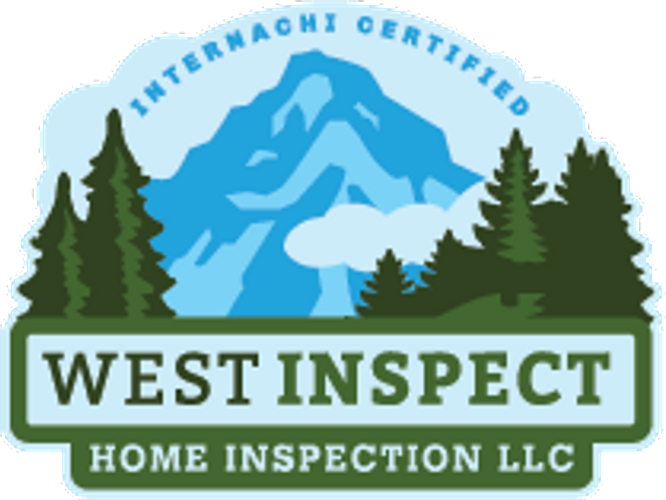
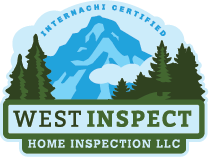
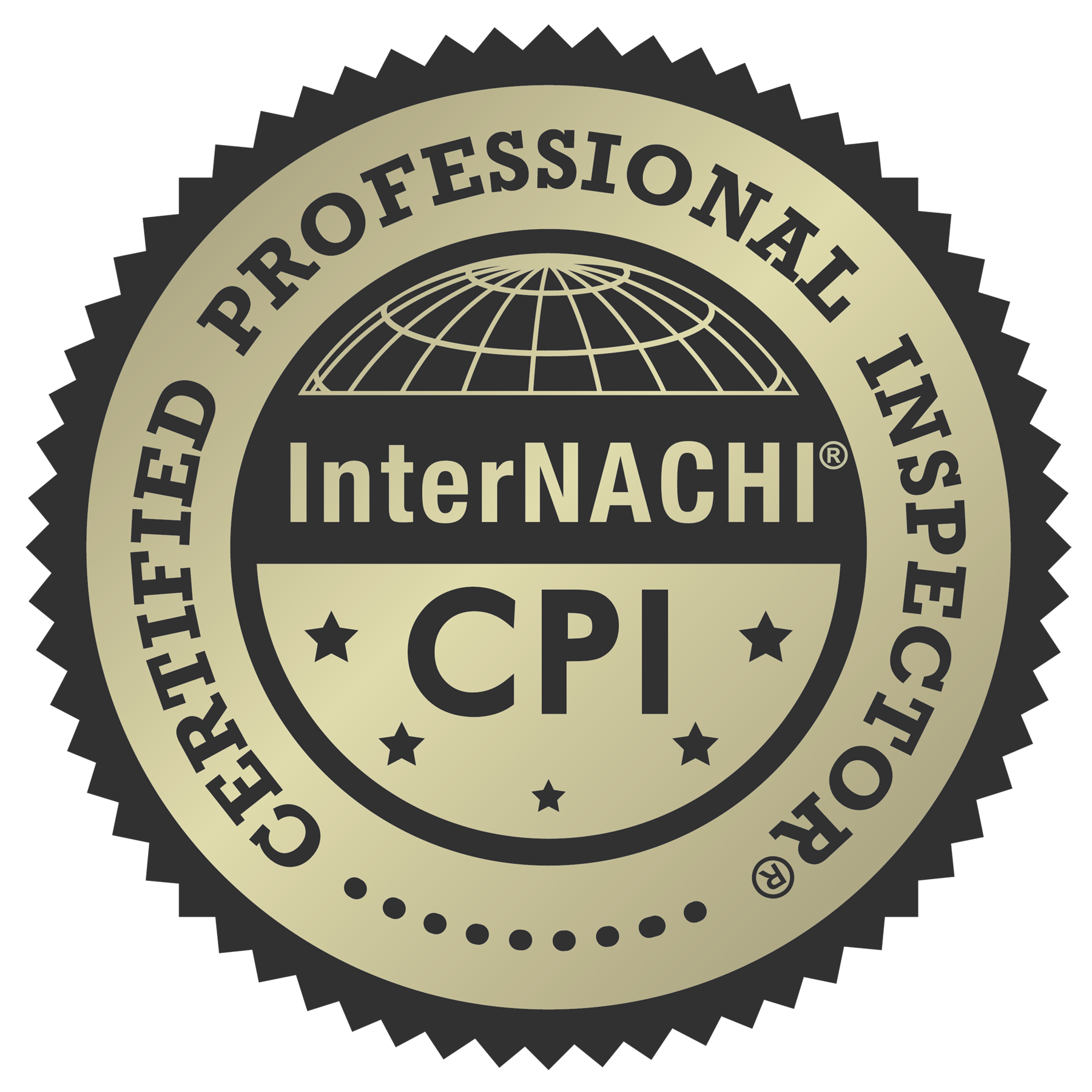
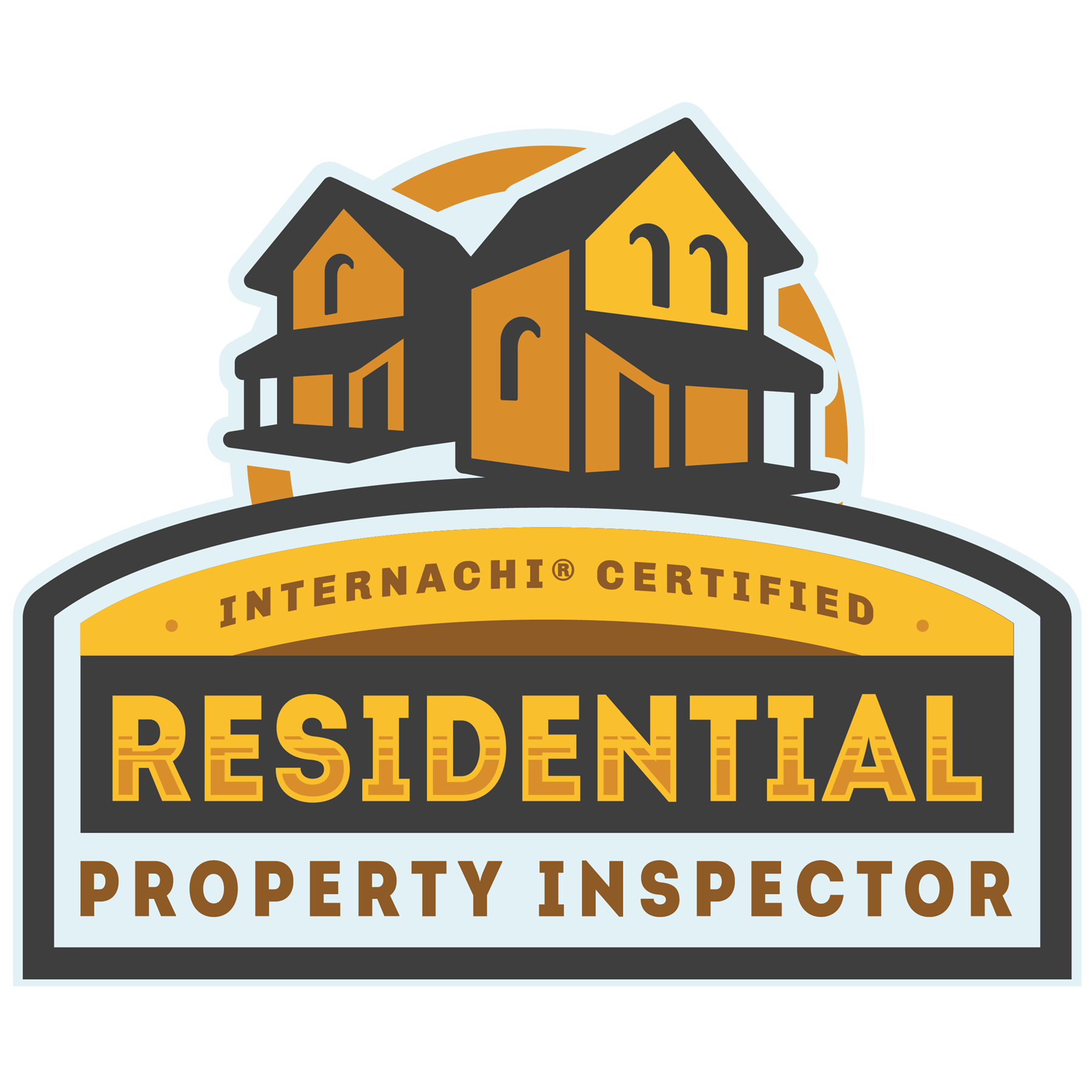
.jpg)
